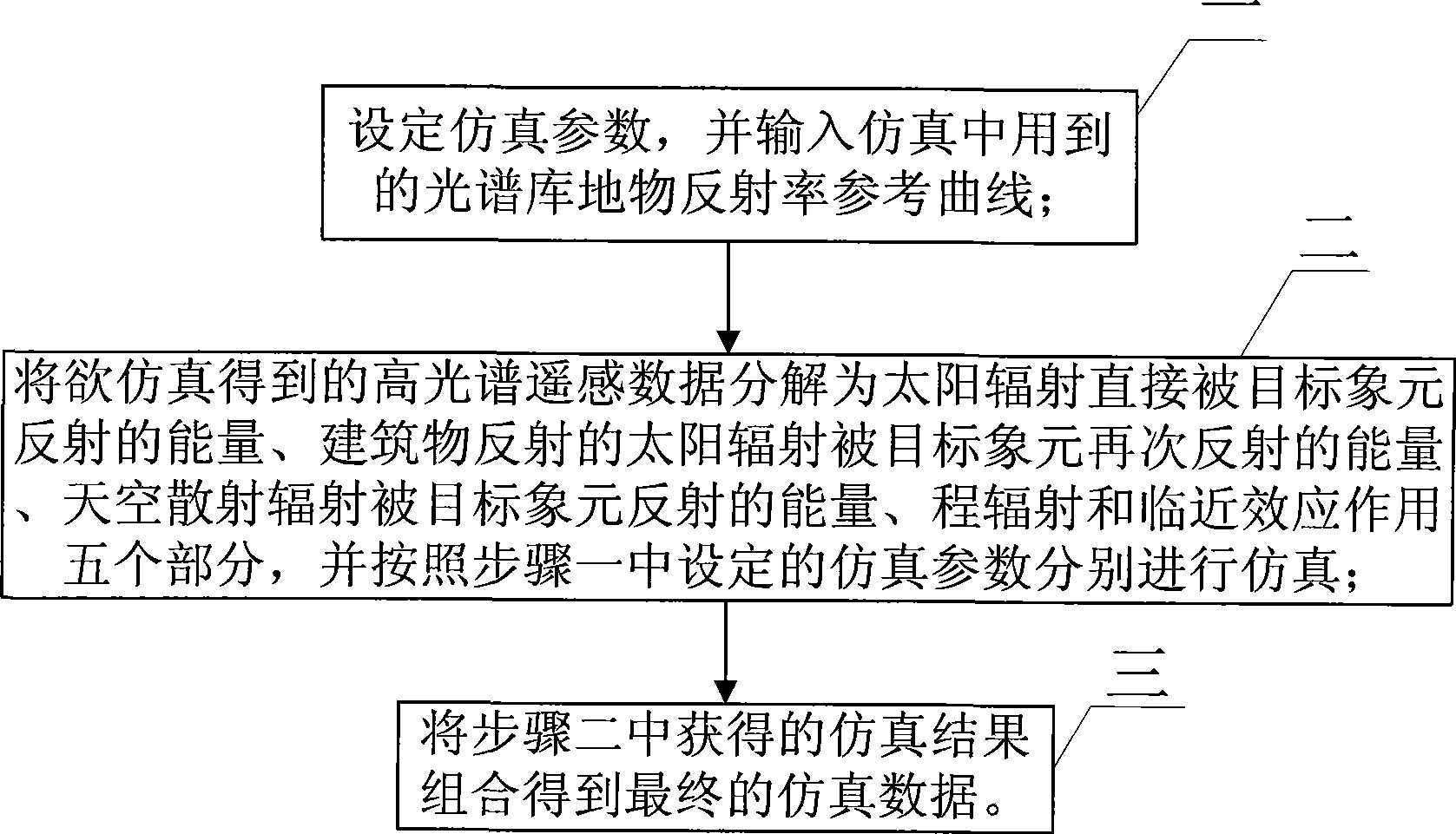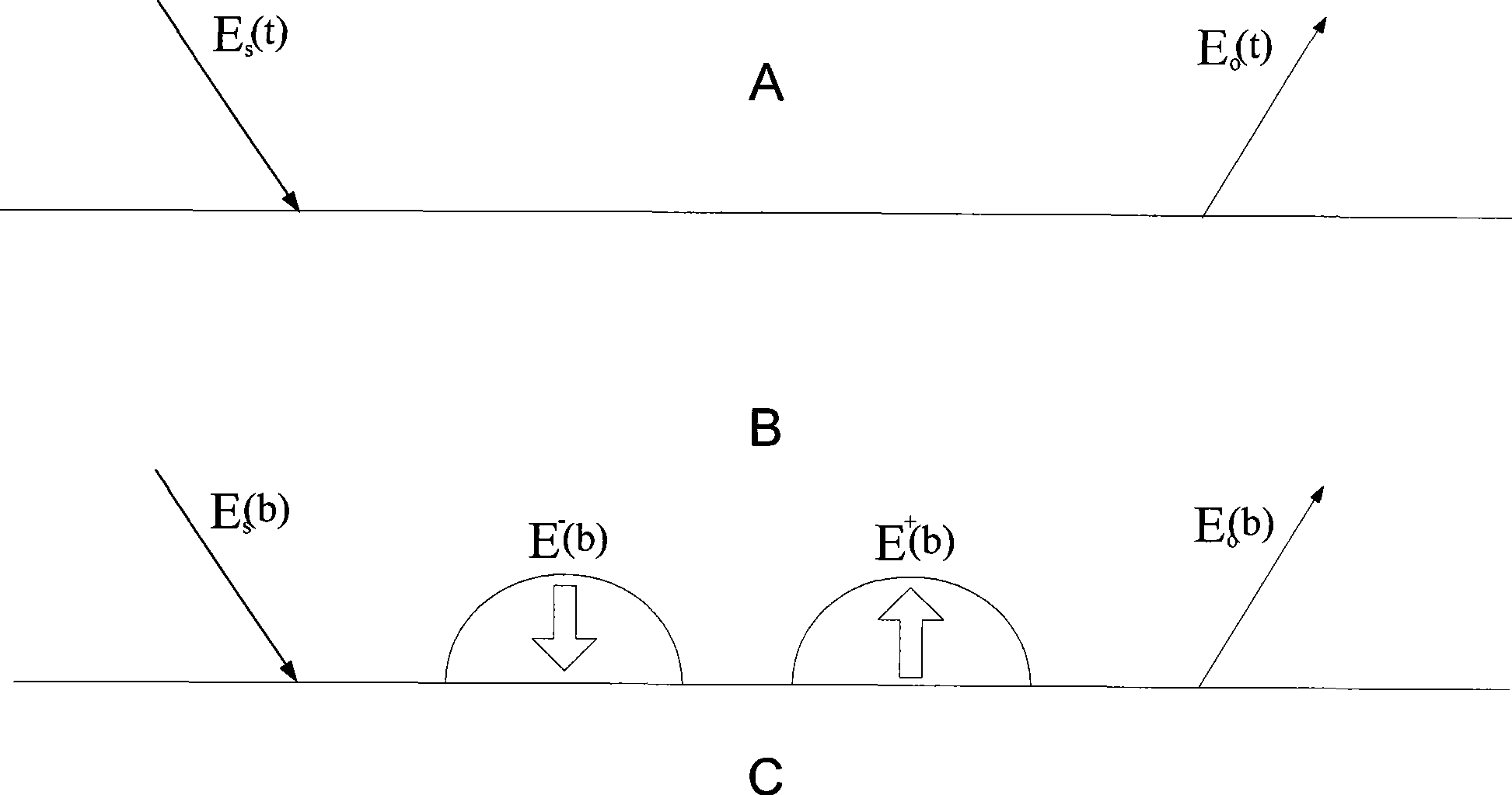Simulation method used for woodland complex scene high-spectrum remote sensing data
A technology for hyperspectral remote sensing and complex scenes, applied in electrical digital data processing, special data processing applications, instruments, etc.
- Summary
- Abstract
- Description
- Claims
- Application Information
AI Technical Summary
Problems solved by technology
Method used
Image
Examples
specific Embodiment approach 1
[0013] Specific implementation mode one: combine figure 1 Describe this embodiment, the steps of this embodiment are as follows:
[0014] Step 1: Set the simulation parameters, and input the reference curve of reflectance of the spectral library used in the simulation;
[0015] Step 2: Decompose the hyperspectral remote sensing data to be simulated into the energy directly reflected by the target pixel of the solar radiation, the energy of the solar radiation reflected by the building being reflected again by the target pixel, and the energy of the scattered radiation of the sky reflected by the target pixel , range radiation and proximity effect, and simulate them respectively according to the simulation parameters set in step 1;
[0016] Step 3: Combine the simulation results obtained in Step 2 to obtain the final simulation data.
specific Embodiment approach 2
[0017] Embodiment 2: The difference between this embodiment and Embodiment 1 is that the simulation parameters in step 1 are divided into two groups, namely: surface scene parameters and atmospheric scene parameters;
[0018] The surface scene parameters are ground scene size, resolution unit size (GSD), object classification of each unit, tree type, average tree height, tree canopy size, plant density and building height; the tree canopy size is simplified as an ellipsoid , whose magnitude is determined by the major and minor axes.
[0019] The atmospheric scene parameters are the zenith angle of the sun incident direction, the azimuth angle of the sun incident direction, the zenith angle of the sensor observation direction, the azimuth angle of the sensor observation direction, MODTRAN parameters, spectral range and spectral resolution.
[0020] Other steps are the same as in the first embodiment.
specific Embodiment approach 3
[0021] Specific implementation mode three: combination Figure 2 to Figure 5 Describe this implementation mode. The difference between this implementation mode and specific implementation mode 1 lies in step 2. Step 2 is to fully consider the impact of various factors on the acquisition of hyperspectral remote sensing data, such as figure 2 It is to divide the hyperspectral remote sensing data into the energy of solar radiation directly reflected by the target pixel The solar radiation reflected by the building is reflected again by the target pixel The energy of sky scattered radiation reflected by the target pixel Range Radiation L λ,sky and the proximity effect L λ,adjacent five parts. So the total radiation is the irradiated energy L at the final data sensor obtained by simulation λ,sensor It can be expressed by formula (1):
[0022] L λ , sensor = L ...
PUM
 Login to View More
Login to View More Abstract
Description
Claims
Application Information
 Login to View More
Login to View More - Generate Ideas
- Intellectual Property
- Life Sciences
- Materials
- Tech Scout
- Unparalleled Data Quality
- Higher Quality Content
- 60% Fewer Hallucinations
Browse by: Latest US Patents, China's latest patents, Technical Efficacy Thesaurus, Application Domain, Technology Topic, Popular Technical Reports.
© 2025 PatSnap. All rights reserved.Legal|Privacy policy|Modern Slavery Act Transparency Statement|Sitemap|About US| Contact US: help@patsnap.com



